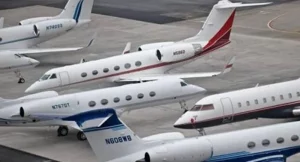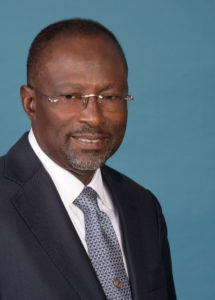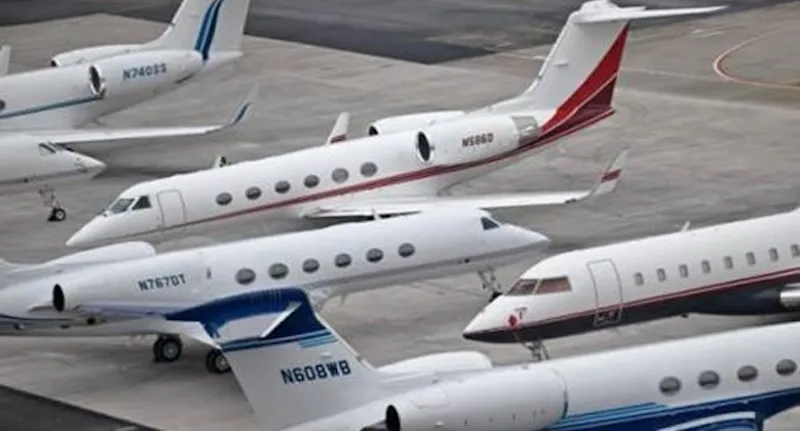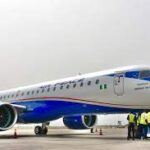
Economic realities, coupled with advanced technology in airspace management are redefining possibilities in domestic flight operations in Nigeria, a development that calls for a review of the choice and size of aircraft put into service, for profitability.
Many years ago Nigerian airlines seemed to have fallen in love with Boeing B737, after they retired the British Aerospace BAC 1-11 and the nation’s airspace was filled by the Boeing aircraft type.
Over the years, Nigerian carriers have realised that while they need aircraft like the size of Boeing 737, they also need smaller aircraft for shorter distances and for airports that cannot provide more than 50-70 passengers at any time. So that reality and the fact that bigger aircraft demand high operational cost, from fuelling to insurance and other factors, airlines began to make changes in their choice of aircraft.
Now, high cost of aviation fuel, country risk, which has upped the cost of aircraft insurance and handling charges, have made a review of aircraft size inevitable, coupled with the fact that technology is reducing the time of flight. So at non-peak hours, airlines may need narrow body aircraft for more profitable operation.
In the book, ‘Air Transportation in Nigeria: The Lingering Expectations’, the authors stated that matching aircraft size to the routes has been one of the most challenging problem of Nigerian airlines and that has contributed significantly to their failure to become maximally profitable in their operations.
Mixed Bag
Industry experts have however observed that one size fits all is not the solution to choosing aircraft for domestic and regional routes because there are times bigger aircraft are needed and sometimes narrow body aircraft would be necessary.
The former Managing Director of the Nigeria Airspace Management Agency (NAMA) and a seasoned pilot, Captain Fola Akinkutou, told THISDAY in a telephone interview that what airlines needed in terms of aircraft choice was a mixed bag.
Akinkuotu said while choosing aircraft type and size, an airline ought to consider the culture of the people, noting that in Nigeria air travellers expect a certain kind of aircraft that they feel comfortable with.
He also noted that majority of the travelling public in Nigeria carry load and if an airline deploys narrow body aircraft like the Embraer EM145 or propeller aircraft like ATR, they may not be able to carry the luggage of travellers.
“Most of the time Nigerian traveller carries more than a suitcase. It is good to have smaller aircraft, which will make cost of operation low, but you have to realise that profit of an airline comes in pennies so for the airline to be profitable it has to collect a lot of pennies, which means that you have to make a lot of flights. This means that you need volume; you need critical mass. Two small airplanes can give you money but not enough money that can enable you make profit.
“So for you to hit critical mass you ought to have 13 airplanes to take advantage of the benefits of volume. Then you have to put the culture of the people that you are carrying. This is very important. During holidays, which we have many in Nigeria, those who hitherto carry portfolios will now carry big bags. So there should be a mix. You have to have five-year plan to grow from two aircraft to 13 aircraft. If you have two or three aircraft, wait till one is due for C-check. If it goes and comes back in due time you will know the airline is making money,” Akinkuotu who is also former Director General of the Nigerian Civil Aviation Authority (NCAA), said.

Right Equipment
Air transport specialist and former Managing Director of the Federal Airports Authority of Nigeria (FAAN), Richard Aisuebeogun, said there was need for Nigerian carriers to review their choice of aircraft and pointed out the benefits of using the right aircraft in domestic and regional operations. He urged Nigerian operators to take the right decision by choosing the aircraft that best suit their business plan.
“Gone are the days when people wake up and just say that they want to bring in aircraft because they want to startup an airline. You just don’t bring any aircraft in; you look at the market. A new trend is being witnessed in the last four to five years. The new entrants into the airline business have demonstrated that they understand the airline economics business. And so when you see airlines like United Nigeria, which arrived with the Embraer 145, Ibom Air with the CRJ 900, lately ValueJet with CRJ 900. Two other airlines besides Cally Air and one other airline from the northern part of the country made the right choice of aircraft. And some of the old airlines, which are going into wet lease, are leasing what I would term appropriate equipment for the routes as well.
“So gone are the days when you do showmanship by bringing in 737-800, B737-700, these are new generation aircraft and these are aircraft that should do minimum of five hours because of their endurance and their capacity as well. And we should know that that is the appropriate thing. I will tell you, look at Kenya Airways, for all the years that I have known Kenya Airways operate from Nairobi to Lagos and Lagos to Nairobi and all occasions I have flown Kenya Airways, I have flown the 737-700 NGs, not even 737-800, it has been 737-700 NGs. Nairobi-Lagos, five and half hours’ flight. So, the truth is that, that is what those aircraft are meant to do. Therefore, when you now have variables, such as jet fuel price rising astronomically and, of course, you know that in the entire operating cost of an airline business, jet fuel is almost 30%. It used to be about 25% but it has gone up as 30% right now. So, if one component in the entire value chain of your operating cost is 30% of the entire total cost of the operation of the business, you can imagine what you are going to be going through. And coupled with the fact that this component is not readily available. The epileptic availability is of concern as well. Therefore, without any gainsaying, it is going to be very appropriate for entrepreneurs to get the right aircraft, which is narrow body aircraft, such as the ones we are seeing in the fleet of the current airline operators in Nigeria,” Aisuebeogun said.
He emphasised that these narrow body aircraft would definitely contribute to the economics of airline business. In other words, the chances of making profit are high when you operate such aircraft size, remarking that in 2019 Air Peace announced firm order for the Embraer E195-E2, noting that the aircraft type is the most advanced aircraft operating in Nigeria’s airspace today; after the airline took delivery of some of the order and is expected that it would receive more of the aircraft this year.
“The E192 is perhaps the most advanced airplane in Nigerian airspace today in the domestic route. And Air Peace has been flying this aircraft in addition to the Embraer E145 they have in their fleet. So, there is no doubt that it is going to increase the profitability of Air Peace. And that is exactly what Overland Airways has done consistently in the last 20 years for the hub and spoke regional operations. That is the appropriate thing to do; that is the way to go to be profitable. Now my conclusion would be that, yes, whether it is going to be on the domestic route or on the regional, the appropriate aircraft should be narrow-body with long endurance. Take note of that,” he further said.

Aisuebeogun reiterated the need for long endurance aircraft and said that it is the aircraft that has the capacity to operate for minimum of five hours so that it would be suitable for regional services.
“And when I say long endurance, it is a minimum of five hours endurance for the regional operations. So that is the business model that airline like Asky, and an airline like Air Cote d’lvoire are using. Air Cote d’lvoire flies Airbus A320 to Lagos. In fact, in the region where Air Senegal flies to, although they don’t come to Lagos, they still fly the mid-size aircraft, the single isle narrow-body aircraft across the entire West Africa region and beyond. Even to Europe, that is what they fly to Europe from Dakar. These are mid-size narrow-body aircraft. That is what the domestic operators in Nigeria must embrace quickly. Look, never mind the mindset of the Nigerian travelling public,” he said.
Domestic and Regional Service
The Managing Director of Flight and Logistics Solutions Limited, Amos Akpan, said single isle aircraft were built for domestic and regional service and explained that they are chosen by operators because they fit into market size of the routes they are deployed to.
Akpan, who had managed airlines in the past, noted that the decision to chose which of the aircraft type and size, is embedded in the business plan of an airline, adding that it is not expected that the airlines should deviate from it; unless there was a need for another review.
“Single aisle aircraft are built for domestic and regional flights usually for duration of 45 minutes to four hours of flying. They are so chosen by the operators because they fit into the market size of the routes they are deployed. It is a consequence of the business plan of the airline. Many questions will need answers and the answers properly situated in the business operations module. Who is currently traveling? Who can be potentially pulled in or wooed? What will be used to attract them? What is the break-even payload per flight on a specific route with a specific aircraft type? What makes economic utilisation of the chosen aircraft,”? he queried.

Akpan explained that West Coast operation is now a mixed market module consisting of international travellers pulled from sub-hubs in the West African major airports. In other words, airlines designate aircraft for long haul destinations and mop passengers from Abidjan, Lagos, Dakar, Togo, Abuja and board them on intercontinental flights to Europe, the US, China, Middle East and other major destinations.
“West Coast Operations now is a mixed market module consisting of traders and corporate business travelers within the region. West Coast flyers carry a lot of baggage and cargo. When the West African flies in from international trips, they carry plenty of luggage, which is difficult to fit into the single aisle aircraft. This is a problem for operators because most regional aircraft have no capacity for a lot of baggage and cargo.
An operator may need to get aircraft that carries 60 passengers with six tons of baggage and cargo on a flight. Then they will compute cost versus income to determine yield per kilometer and yield per route. Currently, no operator on the West Coast route uses a wide – bodied double aisle aircraft,” Akpan further said.
On the cost of aviation fuel, he said it is the costliest component, followed by the cost of maintenance and insurance, then handling and navigation charges are next, remarking that business plan and corporate governance remain the key to unlocking profitable west coast operations.
“Cutting flight time in the region with the use of satellite based augmentation system will help reduce the cost of operations per sector.
It saves fuel when a 50 minutes flight lands at 50 minutes instead of landing at 90 minutes because of the navigational aids. This will save cost,” he said.
THISDAYLIVE.COM






